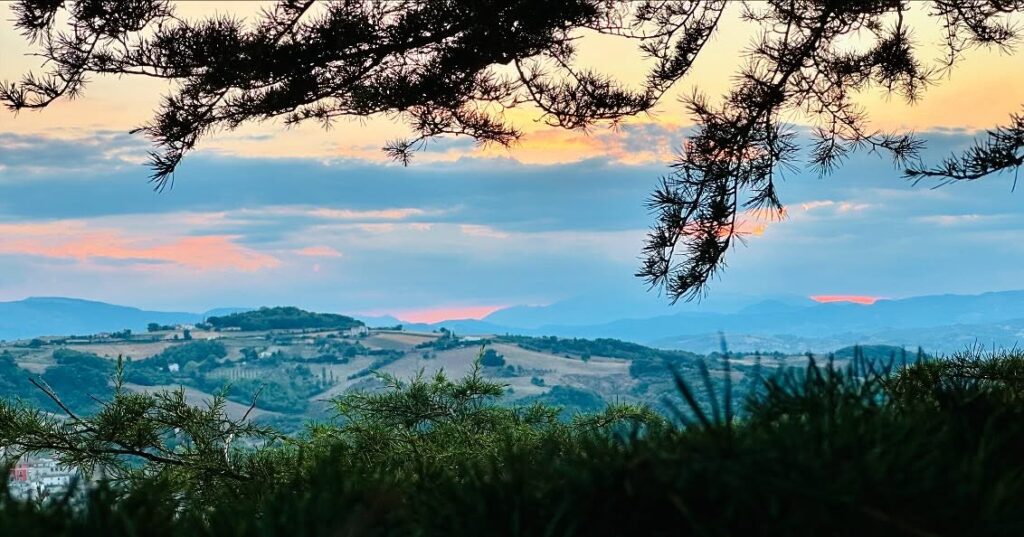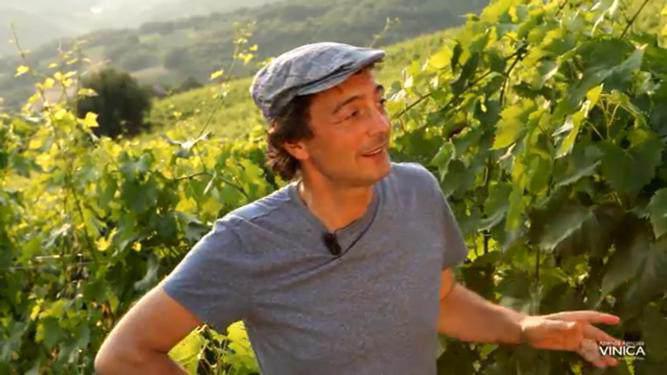Rodolfo Gianserra began to work with Sangiovese grapes by chance. In a shipment of root stock of his signature grape, Tintilia, a smattering of Sangiovese found its way in. “Luckily, they were mountain Sangiovese, so I could grow them in Molise,” he remembered. Gianserra’s winery, Agricolavinica, is in the small town of Ripalimosani in Molise, a rugged, rural province near the Adriatic Sea—not where Sangiovese, more typical of Tuscany, usually grows.
Rodolfo Gianserra Wants You to Get to Know Molise, The Greatest Wine Region You’ve Never Heard Of
Molise, the second-smallest Italian region, has only one indigenous wine grape: Tintilia. It’s also Italy’s “youngest” region, since it used to be part of Abruzzi e Molise. They separated in 1963. Wild boars forage in the foothills, and at night, there’s little light pollution in the vast, dark skies. In Molise’s town squares, it’s common for people to sit in outdoor cafés or at the stoops of bars all night talking, perhaps over a bottle of Gianserra’s Tintilia from Agricolavinica. There’s a joke saying “il Molise non esiste,” poking fun at its small size and obscurity. But it does, in fact, exist, and it has some of the most unique wines in Italy.
The Sangiovese accident is characteristic of Gianserra’s attitude towards winemaking. He’s inventive, wastes nothing, and wants to allow the land he loves to speak for itself, rather than intervening in its processes. “My fight in life is to make Tintilia known and loved,” he said. In my case, he was preaching to the converted. Tintilia is one of my favorite grapes. It contributes mightily to complex, singular wines that feel smooth and dignified but still approachable. The grape is both fresh and full-bodied, acidic without sacrificing flavor. Tintilia is a high-altitude grape and has the crispness that high-altitude soil provides. Its deep garnet color is mesmerizing to look at in a glass. It has a complexity that makes me want the experience of drinking it to never end.

Bringing Tintilia to the World
Though Gianserra said his Tintilia isn’t a “meditation wine” to wax poetic over and instead more to pair with food and enjoy, I found his 2018 vintage nonetheless worthy of spending time with. From the first aroma of tobacco and spice emerging from the glass, I knew it was a star.

Gianserra’s take on orange wine, a skin-contact Trebbiano, is only 11% ABV and more refreshing and clearly acidic than other skin-contacts from Slovenia or Georgia. Like a song that allows the singer to use her full vocal range, Gianserra’s wines justify their medium, so to speak. They’re wines from the unique soil of Molise, a mixture of clay, sand from the Adriatic beaches, and mountain brush.
Because Molise has no indigenous white grapes, Gianserra brought in Riesling and Sauvignon Blanc, two high-altitude grapes that could thrive in Molise’s cold climate. The result is highly quaffable but refined white wine with pleasant acidity. Gianserra prefers wines that he calls “drinkable,” lower-ABV and designed for sharing in a meal setting. The idea of making wines “drinkable” might sound like an obvious thing for a winemaker to do, especially in Italy. But there are wines that are higher-concept and layered, or more ideal for aging, or where the winemaker cut corners for a faster entry to market.
Because they lack funky taste and cutesy marketing, Gianserra’s wines are not what we in the States might associate with “natural wine”. Though in Italy wines do have to meet certain standards to be “organic,” what Americans might call “natural wine” in Italy might just be…wine.
Low Intervention That Allows Molise’s Terroir to Shine
Part of Gianserra’s low-intervention winemaking involves using stainless steel barrels. Every harvest starts at 6:30 in the morning and ends at 1PM, which helps avoid sulfites in the grapes. Then, the grapes go into the stainless-steel barrels. “The problem with stainless steel is that you need time to age the grapes, whereas with other containers, the process gets accelerated. But once you get into a schedule with it, it’s okay,” Gianserra said.

Some people have visited his cellar and said it looks almost surgical in how clean it is, which is no accident. Gianserra is a dentist and oral surgeon as well as a winemaker, whose time studying in the United States nearly twenty years ago made him want to take advantage of Italy’s epicurean history. “I realized what I was taking for granted in Italy,” he said. Under the wrong vision, a surgeon’s clinical cleanliness could result in wines that lack character or feel sterile. But Gianserra’s fastidiousness gives the wines room to breathe.
The accidental Sangiovese from 2020, the first “Sangiovese del Molise,” is a unique version of the grape that gives it a fresher flavor profile with more acidity. There is something about Gianserra’s wines that feels very open, already at the place that some other wines need decanting to arrive at. Though that harvest of Sangiovese wasn’t one he’ll necessarily repeat, he saw the product as another opportunity to showcase Molise’s unique terroir in Italy.
Americans can get his wines at restaurants all around the country, as well as at restaurants in Rome, only two and a half hours from Molise. But he encourages people who travel to Italy to explore beyond the tourist destinations. “Molise is very untouched and unpolluted, how Italy used to be,” he said. “It’s a nice place to escape from a crazy world. Quality over quantity, that’s Molise’s motto.”
Story by Emma Riva
Photo courtesy of Rodolfo Gianserra
Subscribe to TABLE Magazine’s print edition.
